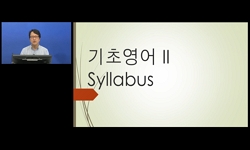This study attempts to study stylistic phenomena in Surat Yusuf. It became clear that the verb was one of the most stylistic phenomena that have been used frequently in that Surat, 25.2 of the total number of words. It is worth mentioning that the typ...
http://chineseinput.net/에서 pinyin(병음)방식으로 중국어를 변환할 수 있습니다.
변환된 중국어를 복사하여 사용하시면 됩니다.
- 中文 을 입력하시려면 zhongwen을 입력하시고 space를누르시면됩니다.
- 北京 을 입력하시려면 beijing을 입력하시고 space를 누르시면 됩니다.
부가정보
다국어 초록 (Multilingual Abstract)
This study attempts to study stylistic phenomena in Surat Yusuf. It became clear that the verb was one of the most stylistic phenomena that have been used frequently in that Surat, 25.2 of the total number of words. It is worth mentioning that the types of verb are different past and present and imperative mood with different rates. This research shows that each verb has a stylistic advantage that the narrator depended on it by in dealing with this story.
So the study concluded that: First, the past verb is one of the most frequent verbs, thus it played an important role in the storytelling narrative within Surat Yusuf, and therefore the narrator used it to narrative events, and therefore the narrator use it to narrate event, most of the verses began with “Said,” to tell the story on its owner’s tongue, it was also a starting point for expressing the present, The time of the verb has changed from the past to explain the time of storytelling, to the present tense to express the time in which the story takes place.
Second, the present verb came in second place, it also gave an area in which to move the character to express the drama of the event, it gave the character an opportunity to express itself by present tense that indicates the presence of the character at work.
Third, the imperative mood, although it came in third place, but it played a prominent role in expressing the strength of the character, so there is a direct relationship between character and its strength, it has already grown up with Yusuf’s growth, at first he was a weak character as a child who could not resist his powerful brothers, so we don’t find the imperative mood mention. And on the contrary when he grows up and becomes a young man, he uses it. Thus it turns from his brothers to strong Yusuf.
참고문헌 (Reference)
1 "وتحقيق الدكتور يحيى بشير مصري، ط 1، سلسلة نشر الرسائل الجامعية، جامعة الإمام محمد بن سعود الإسلامية"
2 "وادي، طه ) 2003 (. الرواية السياسية، الشركة المصرية العالمية للنشر لونجمان، القاهرة"
3 "قاسم، سيزا )1984 (. بناء الرواية، الهيئة المصرية العامة للكتاب، القاهرة"
4 "فضل، صلاح) 1998 (. علم الأسلوب مبادئه وإجراءاته، دار الشروق، ط 1 .،"
5 "غنيم، كمال أحمد) 2011 (. بناء السرد القصصي في سورة يوسف، مجلة جامعة"
6 "سورة يوسف، السورة الثانية عشرة في االترتيب القرآني للمصحف الشريف"
7 "العبد، يمنى) 1990 ( . تقنيات السرد الروائي، دار الفاربي، بيروت"
8 "الأقصى، سلسلة العلوم الإنسانية، المجلد الخامس عشر، العدد الثاني، ص 34 - 62 ، يناير"
9 "ابن الحاجب) 1417 ه - 1966 م(. شرح الكافية، القسم الثاني، المجلد الأول، دراسة"
1 "وتحقيق الدكتور يحيى بشير مصري، ط 1، سلسلة نشر الرسائل الجامعية، جامعة الإمام محمد بن سعود الإسلامية"
2 "وادي، طه ) 2003 (. الرواية السياسية، الشركة المصرية العالمية للنشر لونجمان، القاهرة"
3 "قاسم، سيزا )1984 (. بناء الرواية، الهيئة المصرية العامة للكتاب، القاهرة"
4 "فضل، صلاح) 1998 (. علم الأسلوب مبادئه وإجراءاته، دار الشروق، ط 1 .،"
5 "غنيم، كمال أحمد) 2011 (. بناء السرد القصصي في سورة يوسف، مجلة جامعة"
6 "سورة يوسف، السورة الثانية عشرة في االترتيب القرآني للمصحف الشريف"
7 "العبد، يمنى) 1990 ( . تقنيات السرد الروائي، دار الفاربي، بيروت"
8 "الأقصى، سلسلة العلوم الإنسانية، المجلد الخامس عشر، العدد الثاني، ص 34 - 62 ، يناير"
9 "ابن الحاجب) 1417 ه - 1966 م(. شرح الكافية، القسم الثاني، المجلد الأول، دراسة"
동일학술지(권/호) 다른 논문
-
ةيبرعلا ةغلل تيوصلا ءانبلا في ماغدلإاو في&#
- 한국아랍어아랍문학회
- Abd al-Karim Asad Qahtan(ن,ا,ط,ح,ق,د,ع,س,أ, ي,م,ر,ك,ل,ا, د,ب,ع,.د,.أ)
- 2017
- KCI등재
-
『오셀로』와 『북으로 이주하는 계절』의 상호텍스트성 연구
- 한국아랍어아랍문학회
- 장현자(Jang, Hyeon ja)
- 2017
- KCI등재
-
아랍어 신문을 활용한 유도작문과 통제작문이 아랍어 쓰기 능력에 미치는 영향 -중급 학습자를 중심으로-
- 한국아랍어아랍문학회
- 문지영(Mun, Ji-Young)
- 2017
- KCI등재
-
نيآرقلا صقلا ليكشت في لاعفلأا رود اجً ذَ وُ&
- 한국아랍어아랍문학회
- فلخ ىونج(Nagwa Kalaf)
- 2017
- KCI등재
분석정보
인용정보 인용지수 설명보기
학술지 이력
| 연월일 | 이력구분 | 이력상세 | 등재구분 |
|---|---|---|---|
| 2026 | 평가예정 | 재인증평가 신청대상 (재인증) | |
| 2020-01-01 | 평가 | 등재학술지 유지 (재인증) |  |
| 2017-01-01 | 평가 | 등재학술지 유지 (계속평가) |  |
| 2013-01-01 | 평가 | 등재 1차 FAIL (등재유지) |  |
| 2010-01-01 | 평가 | 등재학술지 유지 (등재유지) |  |
| 2007-01-01 | 평가 | 등재학술지 선정 (등재후보2차) |  |
| 2006-01-01 | 평가 | 등재후보 1차 PASS (등재후보1차) |  |
| 2004-07-01 | 평가 | 등재후보학술지 선정 (신규평가) |  |
학술지 인용정보
| 기준연도 | WOS-KCI 통합IF(2년) | KCIF(2년) | KCIF(3년) |
|---|---|---|---|
| 2016 | 0.13 | 0.13 | 0.12 |
| KCIF(4년) | KCIF(5년) | 중심성지수(3년) | 즉시성지수 |
| 0.1 | 0.1 | 0.402 | 0.1 |





 KCI
KCI



